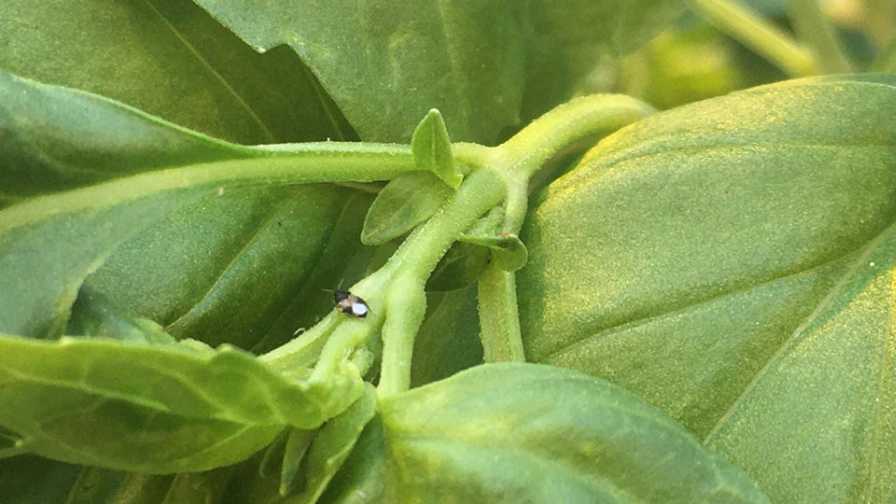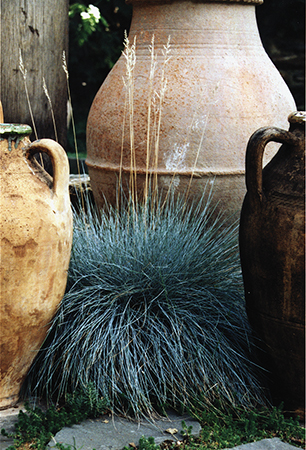Find Success With Biologicals in Leafy Greens

Oriline, which contains the predatory bug Orius, can be used to control thrips in basil.
Photo courtesy of Bioline Agrosciences
The use of beneficial insects and other biological controls in greenhouse lettuce or leafy greens is not yet highly advanced because of the crop habit of the products being grown. Pests are often hidden within the head of the plant, which will ultimately be harvested, meaning a preventative approach will be more successful than a curative one.
However, research into the benefits of biological products from both a crop protection and plant health perspective continues to evolve. Here’s a closer look at some of this innovation taking place at the supplier level.
Targeting Insects and Diseases
Before starting a strategy using beneficial insects, your chemical regime needs to be assessed and any incompatible products removed from the program, according to Dr. Caroline Reid, Senior Technical Support at Bioline Agrosciences.
“The main pests in greenhouse lettuce are aphids, thrips, and sciarid flies,” Reid says. “Aphids can be controlled using several predators, and introduction of Aphidoline (Aphidoletes) or Aphiline (Aphidius colemani) gives the beneficial insects protection and allows the grower to see where the product has been introduced. High numbers are required to ensure control is achieved before the pests get into the heads of the plants.”
When it comes to disease control, choosing a high-quality, effective fungicide for control of soil-borne and foliar disease is critical, says Bond McInnes, Technical Service Manager with AgBiome.
“Pythium, Phytophthora, and Rhizoctonia are all serious pathogens that attack the roots, causing damping-off, smaller, slow-growing plants, and lower yields,” says McInnes, who also notes that products with low pre-harvest and restricted-entry intervals are essential because greenhouse lettuce crops need to be managed closely by growers, and there needs to be flexibility of harvest to meet buyers’ demands.
Nutrition-Boosting Tools
Using biological products in a preventative rather than curative manner is critical to achieving success. This applies to use for pests and diseases, as well as in plant nutrition, according to the biological program management team at BioWorks. For example, tipburn is a common problem in lettuce and is caused by calcium deficiencies in growing tissues. Most calcium moves in the transpirational flow in the plant; when transpiration is reduced and calcium does not move as readily through the plant, transient calcium deficiencies can occur, particularly at the leaf margins.
This physiological disorder can be prevented, according to the BioWorks team, through use of a nutrition and supplement program that ensures key elements are provided and efficiently taken up by the plants when conditions are likely to result in reduced evapotranspiration. Biological materials work best when applied early and regularly and will prevent a whole lot of crop loss and headaches at harvest.
Michael Hull, Technical Services Manager at Kemin Crop Technologies, says leafy greens growers should consider botanicals as an alternative option to standard chemistries to control mites and soft-bodied insects.
“Growers have too often assumed that oil-based pesticides will burn their crops or not be efficacious,” Hull says. “However, new products on the market are field-proven and designed to be safe for the plant, worker, and the environment.”
Most lettuce/leafy greens production is done hydroponically in controlled environments, making it less susceptible to significant pest issues. If pest issues arise, hydroponic growers should have an integrated pest management (IPM) program to mitigate the pressure, Hull says.
The majority of leafy green crops are also excellent host plants of mycorrhizal fungi, according to Jozsef Racsko, Technology Manager at Mycorrhizal Applications. Arbuscular mycorrhizal fungi (AMF) can induce tolerance to environmental stresses and improve the nutrient and water uptake of their host plants leading to a final product with higher nutritional value.
“It has been well documented that lettuce plants inoculated with AMF have an improved growth rate and increased mineral nutrients and contents of compounds beneficial for human health,” Racsko says. “Inoculation of lettuce and other leafy green crops with AMF is highly desirable and profitable.”
It is important to note, however, that plants to be inoculated need to have sufficient length of growth cycle, at least four weeks, for the mycorrhizal symbiosis to form and provide measurable benefits to the plant.










